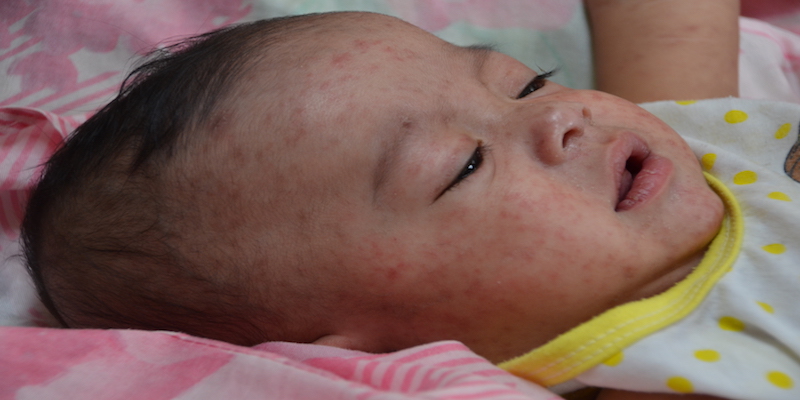The World Health Organization (WHO) is warning that Measles is spreading across Europe. The spread is increasing wherever immunization coverage has dropped with Italy and Romania seeing the largest outbreaks thus far.
In January of this year, Italy reported more than 200 cases while Romania has reported more than 3,400 cases and 17 deaths since January 2016.
Measles is extremely contagious. The WHO says that travel patterns mean no person or country is beyond its reach.
For good defence, it is recommended that at least 95% of the population is vaccinated against the disease however, many countries are struggling to achieve that target.
Most of the measles cases are in countries where immunisation has plunged below this threshold and the infection is endemic. France, Germany, Italy, Poland, Romania, Switzerland and Ukraine are on top of this lift.
The WHO says that preliminary information for February 2017 suggests that the number of new infections is rising sharply.
WHO regional director for Europe Dr Zsuzsanna Jakab said: “I urge all endemic countries to take urgent measures to stop transmission of measles within their borders, and all countries that have already achieved this to keep up their guard and sustain high immunisation coverage.”
Between 1 February 2016 and 31 January 2017 the UK reported 575 cases of measles, says The European Centre for Disease Prevention and Control.
Robb Butler, of the WHO Regional Office for Europe, sites the reasons why vaccination coverage has waned in some regions. “In some countries, like the Ukraine, there have been supply and procurement issues.” He also says that some people are fearful of vaccination while others see it as an inconvenience.
For example, in France, people need to make an appointment with their doctor to get a prescription, go to the pharmacy to collect the vaccine. Then they have to rebook with their doctor to have the jab administered. “We need to get to the point where we appreciate that people have busy lives and competing priorities.” Butler says.
Some important information about Measles
How is it spread?
Measles is spread through direct contact and through the air, via sneezes and coughs. The virus remains active and contagious on infected surfaces for up to 2 hours.
An infected person may pass on the virus to others from 4 days prior to developing the skin rash to 4 days after the rash erupts.
Who is at risk?
Unvaccinated young children are at highest risk of measles and its complications which could lead to death.
What are the signs and symptoms?
The first signs of infection are usually a high fever and cold-like symptoms, such as a runny nose. Small white spots on the inside of the cheeks may also be visible.
After several days, a rash develops which is usually on the face and neck first and then spreading to the body and limbs.
What is the treatment?
There is no treatment, however, two doses of a vaccine can prevent infection in the first place.
